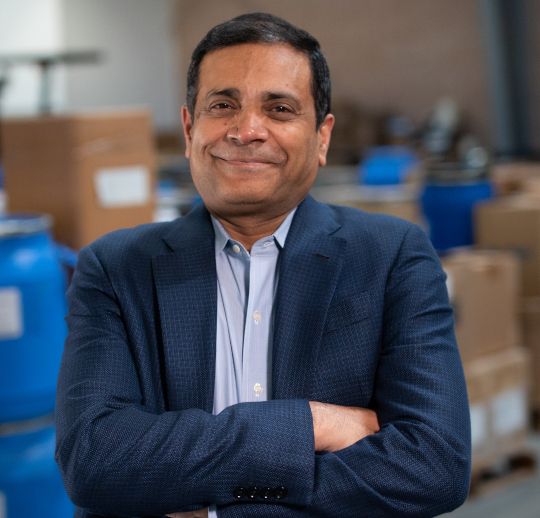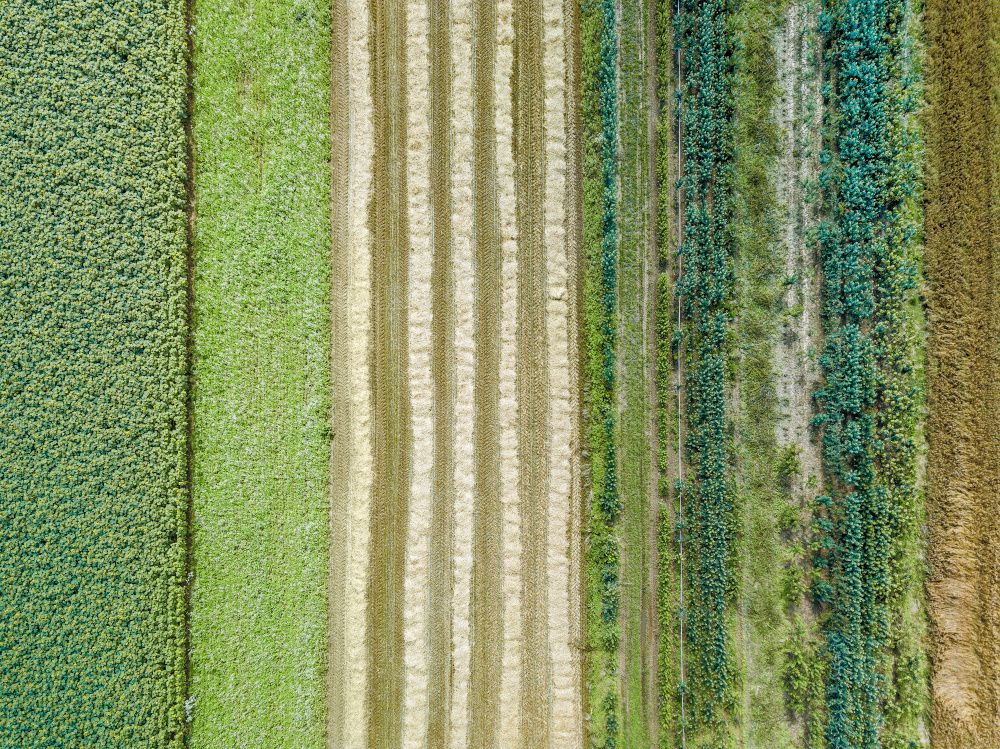Regenerative Rules: Why we need to move from organic to regenerative agriculture
Author Anand Swaroop explains why it’s regenerative agriculture, not organic farming, that has the potential to create a more sustainable future for our planet.
Regenerative agriculture is a type of farming that focuses on rebuilding topsoil, restoring ecosystems, and revitalizing communities. Regenerative agriculture has the potential to mitigate climate change while also providing economic benefits to farmers and food producers.
Organic farming is a type of farming that avoids the use of synthetic inputs such as pesticides and herbicides. Organic farming can also include practices such as crop rotation and cover crops, which can improve soil health.
Many farmers are moving from organic farming to regenerative agriculture in order to reach a larger scale and have a bigger positive impact on the environment. Regenerative agriculture has the potential to change the way we think about food production and create a more sustainable future for our planet.
Anand Swaroop, PhD

Regenerative vs. Organic
As the world’s population continues to grow, so does the demand for food. The way we currently produce food is not sustainable and is having a negative impact on our environment.
Regenerative agriculture and organic agriculture are not the same. Organic agriculture does not focus on ecological outcomes but rather follows a set of rules set by market demands. This means that it can be interpreted in various ways, depending on what consumers want.
Regenerative agriculture does not merely seek to sustain the status quo; it seeks to improve upon it by creating a self-sustaining ecosystem that benefits the environment. This approach focuses on restoring soils that have been degraded by industrialization and promoting healthy ecosystems through farming and grazing techniques that rebuild soil organic matter.
Organic sales account for only 7% of total U.S. food sales, even though the organic food market has been around for more than 30 years. The rules for growing organic food are based on good intentions, but given the new realities of climate change and erosion of biodiversity, one could argue that the organic system may be outdated. Simply put, organic certification does not go far enough to create a more restorative agricultural model.
Regenerative agriculture, on the other hand, is a holistic approach to food production that focuses on rebuilding topsoil, restoring ecosystems, and revitalizing communities.
Advantages of Regenerative
There are many regenerative agriculture practices farmers can use to improve soil health, such as cover crops, no-till farming, and pasture-raised livestock. These practices can help sequester carbon in the soil, improve water retention, and increase biodiversity. Regenerative agriculture has the potential to mitigate climate change, provide economic benefits to farmers, and create a more sustainable future for our planet.
The key difference between regenerative and organic agriculture is that regenerative agriculture goes beyond avoidance to actively rebuild and restore ecosystems. Regenerative agriculture can create a more sustainable food system that is better for the environment and the people who depend on it. Farmers who are moving from organic farming to regenerative agriculture are playing an important role in creating a more sustainable food system.
Supporting Our Farmers
The regenerative agriculture movement is gaining momentum, and farmers around the world are beginning to adopt these practices. In order to reach a larger scale, we need to continue supporting farmers moving from organic farming to regenerative agriculture. We need to educate consumers about the benefits of regenerative agriculture and invest in research and development to create new tools and technologies for farmers.
Some basic principles of regenerative agriculture include:
- Minimize tillage
- Maintain soil cover
- Build soil cover where it does not exist
- Carbon sequestering
- Reliance on the biological nutrient cycle
- Livestock integration into farming
- Encouraging water percolation
- Less dependence on chemical agents
The principles of regenerative agriculture can be applied to any type of farming operation, whether large-scale or small-scale, intensive or extensive. The key is to work with nature, not against it.
Scaling Up Regenerative Agriculture
There are two possible pathways to meet the massive demand for food in the coming years. The first one is to close yield gaps by increasing land productivity. The second is to increase the area of land under cultivation. Expanding agricultural land has been the preferred way so far, and that has resulted in habitat loss and altered biogeochemical and hydrological cycles. The other pathway—increasing land productivity without expanding agricultural areas—is the way to go. That is where regenerative agriculture comes into play.
Soil organic matter (SOM) is an important indicator of soil fertility. The degree to which the amount of soil carbon (C) stored in the soil can be increased depends on the starting conditions.
Although soil organic matter only makes up 2%-10% of most soils, it is crucial for soil health. For example, each 1% increase in SOM allows the soil to hold 20,000 gallons more water per acre. This heightened water retention rate means that crops are more likely to survive during periods of drought or heavy rain. Furthermore, by promoting surface residues and root growth, and by maintaining healthy soil structure with aggregation and pores, etc., SOM also reduces nutrient runoff and erosion.
A healthy crop begins with healthy soil. Plants with the right nutrients and root systems create compounds that protect against insects and disease. There is also increasing evidence that a microbiome full of bacteria, fungi, and nematodes can result in food that is richer in nutrients, leading to better human health overall.
The global average SOM concentration is around 58 g C/kg, but there is a wide range between different soils. The topsoil (0-30 cm) typically has a higher concentration of SOM than the subsoil. The average concentration of SOM in the topsoil is 78 g C/kg, while the average concentration of SOM in the subsoil is 47 g C/kg. The concentration of SOM in the topsoil can be as high as 400 g C/kg, while the concentration of SOM in the subsoil can be as low as 10 g C/kg.
The average C sequestration rate in temperate grasslands is 0.3-1.2 tons of carbon per hectare (t C/ha) per year, while the rate in tropical grasslands is 0.5-2.0 t C/ha per year. The rate of C sequestration in forest ecosystems is 0.5-1.0 t C/ha per year. The estimated rate of C sequestration in croplands is 0.2-0.5 t C/ha per year. The rate of C sequestration can be increased by using management practices that promote the accumulation of SOM in the soil.
No-tillage systems are a management practice that has been shown to increase the rate of C sequestration. The average rate of C sequestration in no-tillage systems is 0.8 t C/ha per year.
The rate of C sequestration can be further increased by adding cover crops or mulches. The average rate of C sequestration in cover crop systems is 1.2 t C/ha/year. The use of mulches can increase the rate of C sequestration by 0.4 t C/ha/year. The application of organic amendments, such as manure or compost, can also increase the rate of C sequestration. The application of manure can increase the rate of C sequestration by 0.4 t C/ha/year, while the application of compost can increase the rate by 0.6 t C/ha/year. Using these management practices can help close the yield gap and increase the amount of C stored in the soil.
Collaborating for Collective Change
Regenerative agriculture is a way of farming that is based on natural processes. This type of agriculture does not use a lot of technology. Some tools, such as low-cost soil sensors and cloud-based phytochemical scanners, might help make regenerative agriculture become more widespread.
While large corporations have the funds for successful sustainability programs with cutting-edge technology, it’s not always feasible for individual farmers. But if we can increase public awareness of how soil health relates to human wellness, demand for regenerative agriculture will follow. This increased consumer demand will make it simpler for more farmers to financially support a transition.
There is currently a global grassroots movement happening around regenerative agriculture. Many farmers, whether they label themselves as regenerative, sustainable, or organic, are beginning to embrace the promise of restoring our broken agricultural system. With more young people entering the industry and more farmland rental options becoming available, there is now greater opportunity than ever to collaborate for collective change.
About the Author
Anand Swaroop, PhD, is a biochemist, president of the evidence-based nutritional ingredient supplier Cepham (Somerset, NJ), and co-founder of Nutrify Today. He earned a Master of Science degree in biochemistry and a doctorate in chemistry from the University of Allahabad, one of India’s most esteemed universities. After a decade in the pharmaceutical industry, he left a lucrative career to devote his expertise to bringing traditional Ayurvedic ingredients from India to the United States. For the next 20 years he developed innovative ingredients for the natural product industry through Cepham. Swaroop’s diverse experience in research, quality assurance, product development, manufacturing, and marketing has given him a unique and multidisciplinary perspective on the industry. Today, he shares his insights and knowledge with entrepreneurs and scientists through Nutrify Today—a one-stop business development platform for the natural products industry that helps facilitate and launch innovative, evidence-based nutraceutical business ideas worldwide—with the vision that healthy people can produce healthy societies. In addition to being an entrepreneur and leader in the pharmaceutical and nutraceutical industries, Swaroop was selected as a Fellow of the American College of Nutrition in 2016. He is a highly sought-after speaker at national and international scientific and business conferences and has written many textbooks on biochemistry, supply chain management, and functional foods and ingredients, and is the author of multiple peer-reviewed publications. Swaroop currently serves as a member of the task force constituted by the government of India to recommend the development of Ayurvedic medicine for India’s nutraceutical sector and for other countries worldwide.
Prinova acquires Aplinova to further increase its footprint in Latin America
April 7th 2025Prinova has recently announced the acquisition of Brazilian ingredients distributor Aplinova, which is a provider of specialty ingredients for a range of market segments that include food, beverage, supplements, and personal care.











